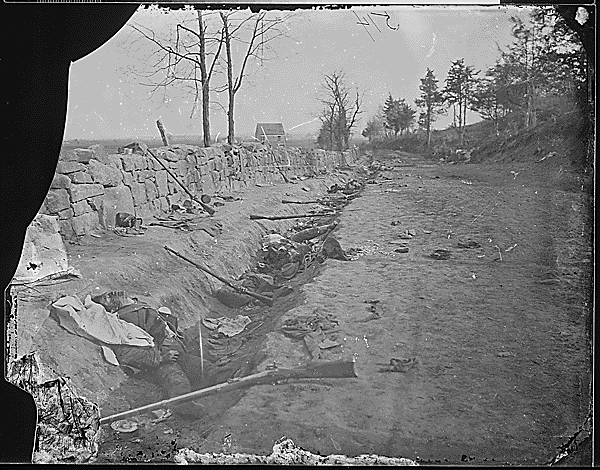Mathew Brady, a prolific American photographer, began his career by photographing presidents and major political figures, but his claim to fame came from his extensive series documenting the Civil War. Born in New York in 1823, Brady began his photography career soon after the invention of the daguerreotype by Louis-Jacques-Mandé Daguerre. He established a portrait studio in New York in 1844. Despite the fact that the art of photography was in its infantry, Brady had to compete with many other aspiring photographers for business. Eventually, Brady became a well-known figure in the field and he began to photograph famous politicians. Among his accolades are photographing Daniel Webster, Edgar Allen Poe, and multiple presidents such as John Quincy Adams and Abraham Lincoln.
When the Civil War broke out, Brady was a high point in his career. He decided to gather a team of other photographers and send them to war zones to photograph the war. Although it would be dangerous and expensive, Brady felt compelled to document the event. His team photographed many of the most famous battles of the war such as the Battle of Bull Run, Antietam, and Gettysburg. The images were not censored and showed the immense brutality of the war. When the photographs of dead soldiers were shown to the public in New York in 1862, Americans were stunned by the carnage and the reality of the war.
One important aspect of Brady’s Civil War photography that is often overlooked is that he did not take a majority of the photographs himself. The photographers working for him were almost never given credit for the photographs that they took, leading to Brady getting all the attention. This led to a number of them quitting.
At the conclusion of the war, Brady’s Civil War project has ruined him financially because he had expected to sell the photographs to the government. Although his photographs are now widely considered to be one of the most significant photographic documentations in American history, at the time, the government did not want to purchase them. His career never recovered. In 1896, Brady died in a hospital ward virtually penniless and unknown.
Although Brady died at arguably the lowest point in his life, the impact he had on the art of photography and our knowledge of the Civil War are great. He influenced the development of documentary and photojournalism photography during the Great Depression era. Also, his Civil War photographs are some of the most helpful and unfiltered sources of information about the time period.

Sources:
In all honesty, I found your post really fascinating. When one thinks of the civil war, photography typically does not come first to mind. I find it interesting how Brady died without really making a name for himself, but his pictures today play a large role illustrating life during the civil war. I respect how he did not censor his photos, allowing the public to truly see the carnage of the war itself. It might have been intriguing to know why he started doing photography and why he felt so compelled to documents the civil war despite the dire risks involved.
ReplyDeleteI find this topic very interesting because if it were not for Brady's photography, the public outlook on war would probably not have been changed for a long time or would simply take longer to change. Before the Civil War, war was very romanticized by civilians and it was not until Brady's photos had received public attention that its gruesome realities surfaced. It is also intriguing how Brady did not receive recognition during his lifetime, but how him and his team of photographers played such a vital role in how the Civil War would be depicted and studied for the future.
ReplyDelete